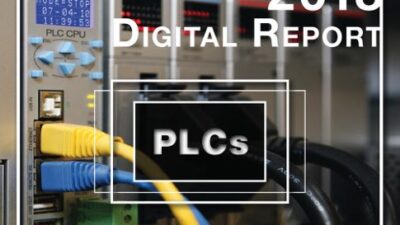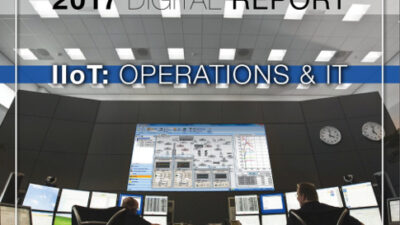Interconnecting various control components and the machines they’re in is worthwhile if doing so improves business, according to recent research. Such interconnecting machine-to-machine (M2M) technologies have the ability to link and coordinate every switch, valve, motor, machine or light in a facility. Industrial plant and commercial facility managers said that in the last 5 years the standard IP network has changed the way they work, according to a summer “2005 Bench-mark Study—Technology Adoption Trends in Plants and Facilities,” in North America, by FiveTwelve Group. Users will to pay up to 10% more for machines bundled with supporting pro-grams that help improve business, the study says; more than 12% of managers plan to reduce conventional IT investment in the next five years in favor of smarter, more complete control net-works, purpose-built intelligent devices, and outsourced maintenance. In U.S. industrial and commercial markets, users will invest as much as $8 billion by 2010 with companies that help.
Those surveyed are wrestling with how to connect more of the enterprise and get value. Busi-nesses often connect computers and servers; in moderately to highly complex production envi-ronments, they also connect sensors and controls to machines. For years, isolated islands of automated equipment have been built on platforms of special connectors and software languages, requiring experts. Integrated control networks have been common in some markets. Multi-layer control networks are more common at utilities and transportation than in industrial and commer-cial buildings. Supervisory control and data acquisition (SCADA) systems allow utility operators to direct electrical grids from a command center. Combined identification and tracking systems (bar-code readers and cell networks) allow logistics and shipping companies to route and track.
Most machine users surveyed anticipate that barriers between IT and control networks and un-connected devices will start to collapse within 5 years, eventually creating one system. Machines’ embedded computers will link to systems throughout businesses, they say, creating an informa-tion pipeline from the “shop floor to the top floor.” Many express caution, even though opportu-nities seem large. For example, a company hoping to outfit motors with chips sees an untapped U.S. 30-million unit opportunity. “M2M Adoption Forecast, 2003” from The FocalPoint Group expects $250 billion in global M2M spending by 2010. For perspective, consider that $250 billion is 25% more than the total U.S. debt held by Chinese investors. (U.S. Treasury Department re-ports $194 billion in U.S. debt held by Chinese, as of December 2004.)
In response, manufacturers are rushing to add sensors and Ethernet connections to mechanical devices. Wireless communication makes it seem easier. Proponents say that M2M will equalize low-wage production country import/export advantages by removing human labor from onshore production and through offshore remote-control interfaces. As processes demand more sophisti-cation, machines mature, developing capabilities to first warn, then report, respond, and learn. Machines’ capital and operating expenses often increase along the way. Managers who’ve built large IT networks complain that when dedicated computers are attached to dumb but productive machines, higher complexity requires hard-to-find levels of training; networked data can go un-used or demand more people to analyze. Worst case, a plant operator or manager in overload might miss an alert sent to a workstation, cell phone, or pager. End-users may see use for more data, but have uncertainty about learning or adapting to upgrades and new maintenance require-ments. Security concerns create liability fear if a hacker accesses an unprotected device in a high-risk plant.
End-users say poorly planned M2M initiatives often require paying for new, unplanned ser-vices for implementation or operations. They have been quick to pilot, but slow to adopt, frustrat-ing some suppliers and investors. Users say any new technology should enable a better course of action and ensure self-sufficiency. While M2M can seem like a scheme to create new supplier service dependency, intelligent networked machines pay off when the process extends past the linked machines to valuable actions (human or mechanical) that the machine initiates. Results need to be proven reliable and measured in dollars or time.
To ensure proper smart-machine investments, ensure:
1. Resulting action and economic value will be clearly understood at many levels. Pinpointing the action often will be harder than linking the machines. Motivating people to change a process requires commitment and cost. Find people with willingness and power to drive change. Invest-ments must demonstrate better return than alternatives.
2. Action can be taken. Customers won’t purchase data for data-sake. They will purchase change that can be implemented in a timeframe that pays back.
3. The new way works. To be considered, the process has to be proven at least as reliable as the one it proposes to replace.
M2M can result in remote operation of an offshore production unit in a lights-out, cost-out strategy; today smarter machines bundled with process innovation can help machine OEMs add differentiating value. Focusing on the technology and motivating change will deliver the strongest competitive advantage. —Nicholas Hayes is a partner at FiveTwelve Group Ltd., a management consulting firm spe-cializing in business-to-business research, marketing, and product strategy.
— Mark T. Hoske, editor-in-chief, Control Engineering,
[email protected]


